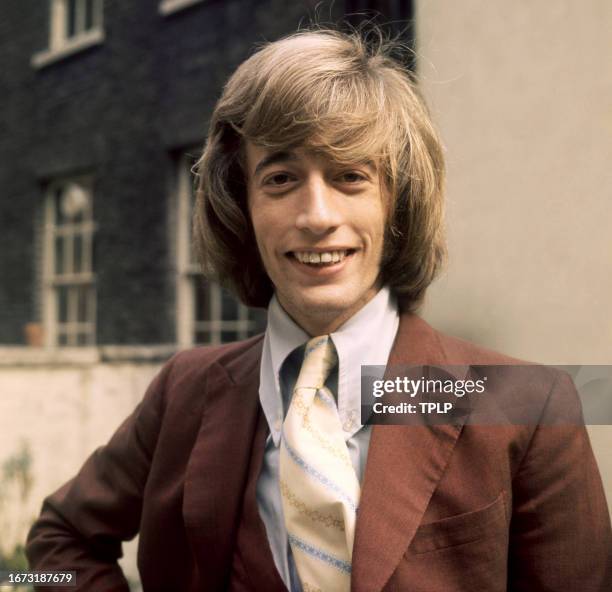
Introduction:
Imagine a haunting voice drifting through the shadows of a dimly lit recording studio—a voice so distinct, it could pierce silence itself. That voice belonged to Robin Gibb, one-third of the legendary Bee Gees. Far beyond the falsetto that defined the disco era, Robin was a visionary artist, a deeply introspective soul, and a man whose life was marked by both dazzling triumphs and profound losses.
Born on December 22, 1949, in Douglas, Isle of Man, Robin was the twin brother of Maurice Gibb and younger sibling to Barry. Together, the brothers formed an unbreakable bond—first through family, then through music. From their earliest performances in Manchester, England, to their formative years in Australia, the Bee Gees’ path was driven by talent, ambition, and relentless dedication.
By the late 1960s, Robin’s voice became the emotional core of hits like “New York Mining Disaster 1941”, “Massachusetts”, and the deeply moving “I Started a Joke.” His brief departure from the Bee Gees in 1969 led to a successful solo release—“Saved by the Bell”—before he returned to the group in 1970, reaffirming their collective genius.
The Bee Gees’ sound evolved dramatically in the 1970s, culminating in the cultural phenomenon that was Saturday Night Fever (1977). Tracks like “Stayin’ Alive”, “Night Fever”, and “How Deep Is Your Love” showcased Robin’s ethereal vibrato soaring above infectious disco beats. As fame reached its peak, Robin faced the emotional toll of life in the spotlight—balancing loyalty, love, and personal identity against the weight of global stardom.
Robin’s personal life was complex. He married Molly Hullis in 1968, and though they had two children, the strains of fame led to divorce in 1980. He later found lasting companionship with Dwina Murphy, an artist and author who shared his interest in spirituality. Their relationship brought emotional refuge and a son, Robin-John, born in 1983.
Though the disco backlash of the 1980s cooled the Bee Gees’ popularity, Robin’s creative spark never dimmed. The group penned hits for other artists, including “Islands in the Stream” for Kenny Rogers and Dolly Parton. Robin’s solo projects—like Secret Agent and Walls Have Eyes—revealed a bold willingness to explore synth-pop and rock.
In 2003, tragedy struck with the passing of Maurice, an event that deeply affected Robin. Yet, he channeled his grief into art. Even after being diagnosed with cancer in 2011, he remained committed to music, culminating in The Titanic Requiem (2012), a haunting classical tribute to the Titanic’s centennial.
Robin Gibb passed away on May 20, 2012. Yet, his legacy endures. His voice continues to resonate across generations, not just through hits but through the emotions they evoke. Robin’s life was a tapestry of artistry, vulnerability, and resilience—a timeless melody that transcends eras and genres.
As we revisit his story, we celebrate not only the music but the man behind it—a soul who turned personal pain into poetic power, and whose voice will forever echo in the symphony of human history